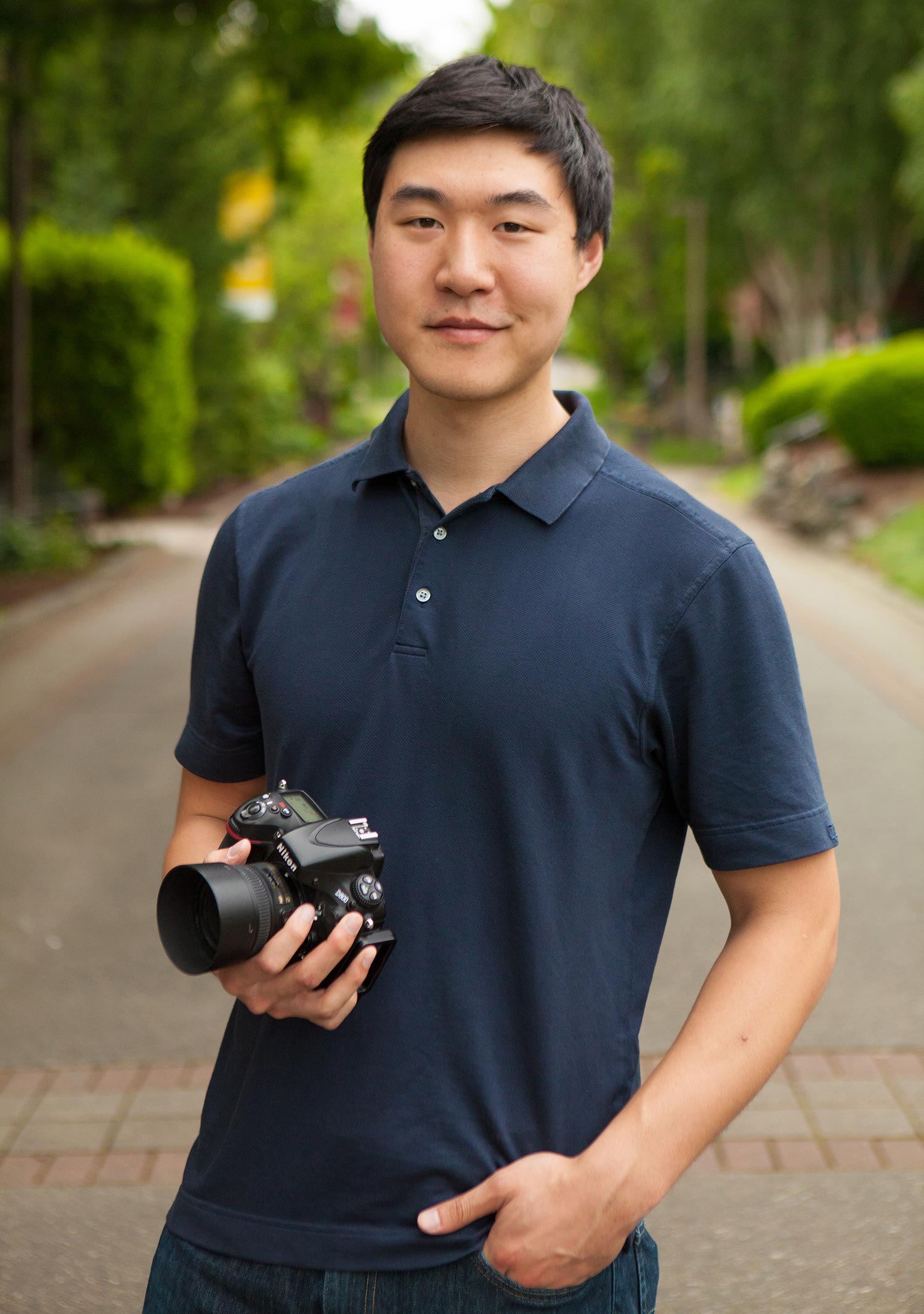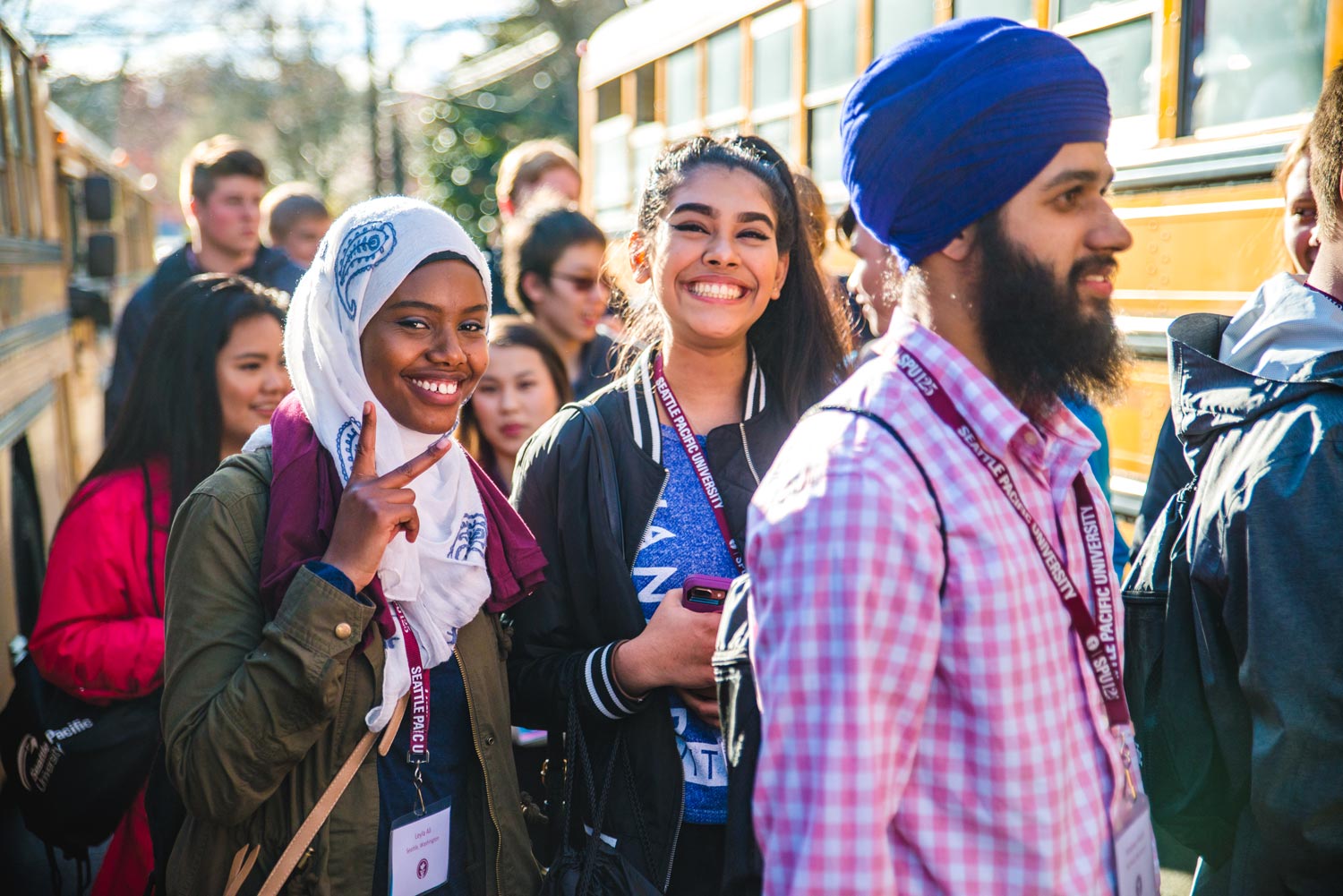How to Photograph Seattle’s Great Wheel: Q&A with SPU Student Chris Yang
During his junior year at Seattle Pacific, Chris Yang won a photography award from the Society of Professional Journalists. Chris’ photo — which appeared in The Falcon student newspaper — captures a moment during Christian civil rights advocate John Perkins’ annual SPU lecture.

Chris Yang, senior pre-med student, one of SPU's freelance photographers.
When Chris isn’t taking photos for The Falcon or studying for his pre-med classes, he also works as a freelance photographer for SPU. We recently asked him to photograph the Seattle Great Wheel while it was lit up to celebrate SPU’s 125 anniversary.
SPU: Seeing the Great Wheel at night in maroon and white, flashing “SPU 125” in morse code, was so fun. How did you approach capturing it all on film?
Chris: When I got to the pier, I tried to go someplace where I didn’t see anyone else. There was a small corner on the very far end, next to the aquarium. Those photos looked across the pier at the Great Wheel, and framed it with the skyline in the background.
With wide-angle shots, and cityscape photos in general, you want to have a clear subject, but also have a clear context. The Great Wheel was clearly the focus, but you could also see very clear indications that it was Seattle in the background.
SPU: Some of your photos show the wheel standing still, while others captured it in motion.
C: There are two ways to capture motion and create that blurred effect: long exposure and multiple exposure. I used multiple exposure, which combines multiple pictures into one. Long exposure leaves the camera sensor open to catch light for an extended period of time.
I also did just a quick exposure, to see how those photos compared. Honestly, I loved the long exposure more and it showed more movement.
SPU: The pier is so fun to visit -– and the view is gorgeous, with the city skyline, the mountains, and the ferries.
C: Yeah, it's great just being on the water and looking at the city. I got there a little before 8 p.m., so I saw the whole sunset.
SPU: What equipment did you bring?
C: A good tripod is important to have, so your shot will be stable. Even a tripod with your phone would be fine. Having a wide-angle lens is important. Even then, if you have a lens with a tighter -– or longer –- focal length, you can really focus on the Great Wheel a little more. But it's nice to have both options.
SPU: I saw you got SPU’s student Snapchat team in some of the photos. That was a neat evening –- the Snapchat team did a story, I posted on Instagram since the IG team couldn’t make it, and we also filmed some 360 video.
Photos you’ve taken for SPU have been used on postcards, and in different parts of the website. Which photos have been your favorite?
C: I really love the campus walk-around photos. Every time I take a photo of someone, we get to have a mini conversation. Meeting them … getting to know people that I otherwise never would have interacted with, that's always fun.
Taking photos of the lu’au was really great. Every assignment is a little bit different. Taking photos of the Great Wheel was very different from taking photos of people. You just focus in on capturing the scene; it’s really more introspective.

Admitted Student Preview photo by Chris Yang
SPU: Your pre-med schedule doesn’t leave room for photography classes, so you joined The Falcon and found other ways to still focus on photography. What about it resonates so much with you?
C: Thinking about my time here at SPU, people that I have met on assignments, or working at The Falcon with other photographers and the editors […] for me, photography has been worth it because of the people I've been able to meet, and the relationships I've been able to have that I otherwise wouldn't have.
We talk to people who aren’t as often featured in the community. That's a part of photojournalism. I'll be able to take photos and feature someone who has not been recognized as much. Getting to meet them, to talk with them, and to take their photo, has a deeper meaning than just taking snapshots of my life.
SPU: Do you have any tips for aspiring photographers?
C: A big thing that stops people from taking more photos is getting in a rut and feeling like they can't do anything different. I try to remind myself that there's always room to improve. Relax and be creative. If you feel like you haven't done something new or exciting in a while, just go out and take photos. "Wow, I have done this 100 times maybe. What way could it be even better?"
Don't be afraid to mess up and to try something new and to let it fail. Being willing to fail has often produced something that actually is cool, or has taught me something that actually would work.